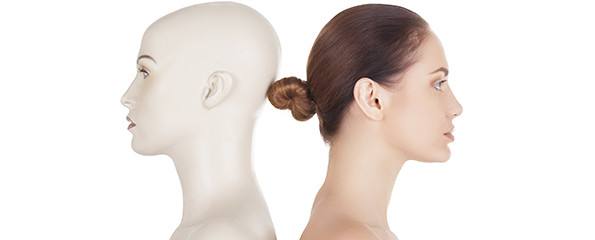Advances in pressure garments for speedy burns recovery
RMIT researchers are designing unique pressure garments to help heal burn patients – with a little assistance from an almost-human friend.
Researchers at the School of Fashion and Textiles were already working on sports compression when they were approached by industry to help create medical compression garments that facilitate healing and reduce scarring.
Lead researcher Associate Professor Olga Troynikov says it was a logical fit.
“We had the knowledge and understanding of how the body interacts with garments that generate required pressure,” she says.
As Associate Professor Troynikov and her research team have discovered, creating a compression garment that is breathable, can manage sweat, smell, heat and can be comfortably worn 24 hours a day is a complex task involving extensive research and testing.
“The biggest challenge is figuring out how to balance all the requirements – comfort, compressive power and durability,” she says.
“The trick is to make it as light as possible, powerful enough to generate effective pressure and breathable enough not to generate additional thermo-physiological discomfort for the patient.”
Two and a half years into the project, the team has investigated a range of fabrics that fit the bill and stage one of the research is nearing completion.
They have created an initial prototype garment using a combination of two warp-knitted materials that have pressure generation capabilities: Powernet and fine microfiber tricot.
Stage two is to test the physiological comfort of the prototype using a technique called body mapping.
However, as the garment is designed for use by burn patients, it is difficult to test on humans. Enter Newton the mannequin, the project’s almost-human friend, and perfect prototype-tester.
Newton has adjustable skin temperature, sweat zones and a variable metabolic rate. Not only does he sweat and breathe, he also has special body-part additions that can temporarily turn him into a woman.
The prototype will be refined using body mapping based on Newton’s feedback, then trialled on people. Further work will be done to incorporate special therapeutic and medicinal substances into the fabric. This could include microencapsulated moisturisers and nano minerals that promote healing. Finally, the garment’s design and colour will be considered.
Associate Professor Troynikov says psychological comfort is vital to the healing process.
“If patients do not like the garments they will resent wearing them, especially in the case of children,” she says. “Design is very important; it is part of our holistic therapeutic approach. The mind plays an important part in the healing process.”
The research will generate compression suits for a male, female and a toddler, ready to be manufactured at scale.
Associate Professor Troynikov says that the project’s holistic approach will deliver stronger benefits to patients. “As technology becomes more sophisticated so does our approach to healing a patient,” she says. “Not just through technology that will deliver a medicinal outcome, but also through delivering wellbeing during therapy by enabling patients to be more comfortable and to continue with everyday activities.”
(Source: RMIT)
Dates
Tags
Created by:

 Login
Login














